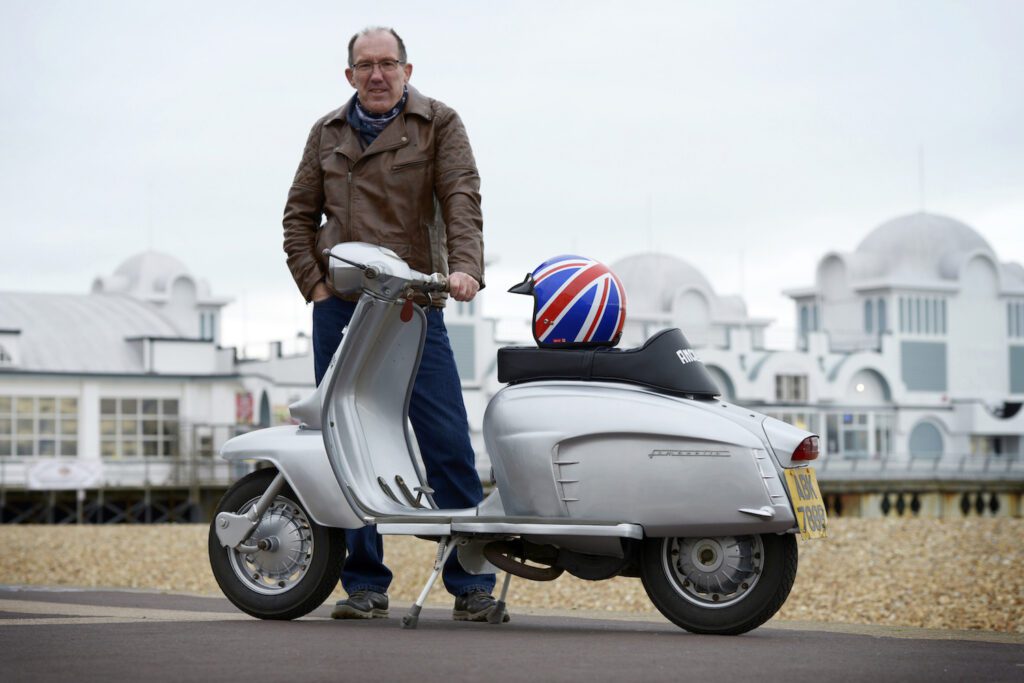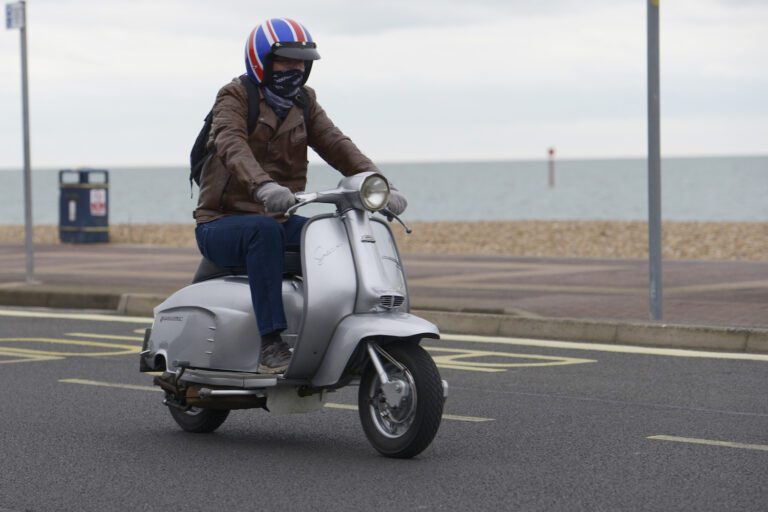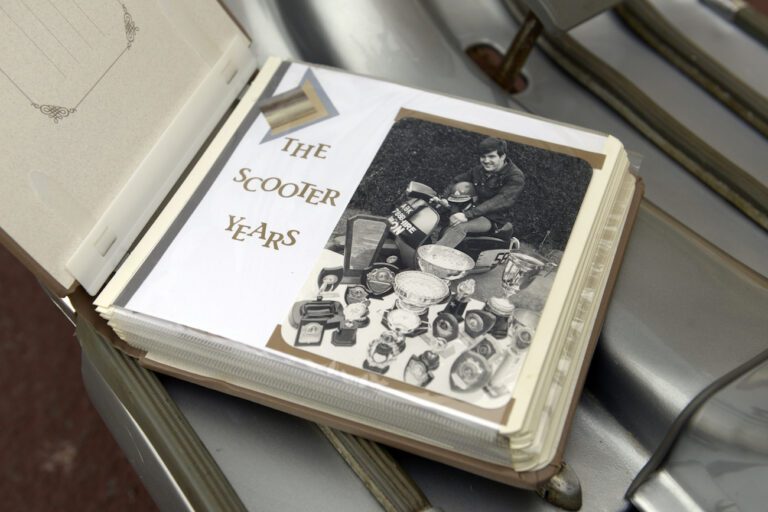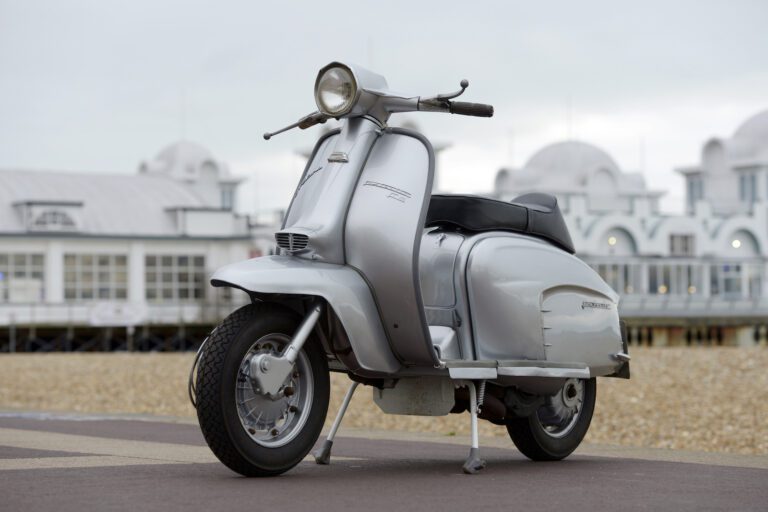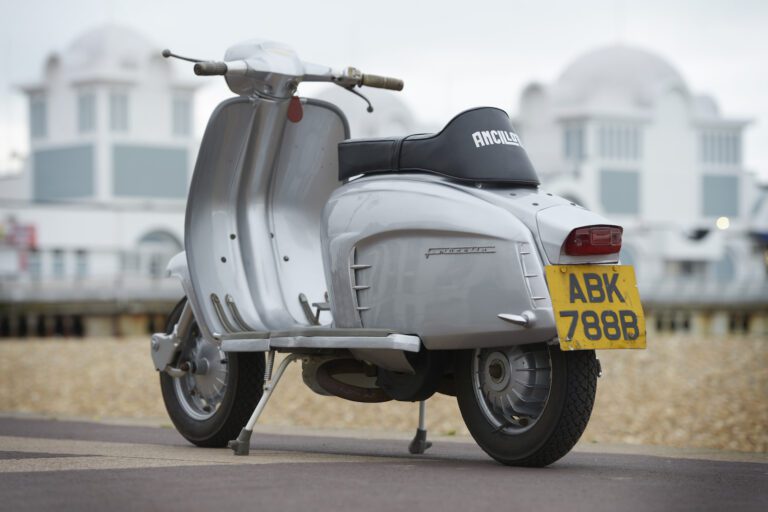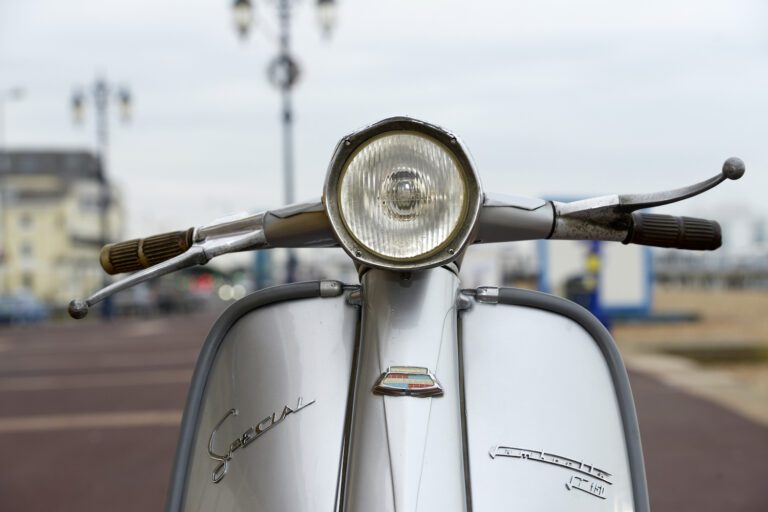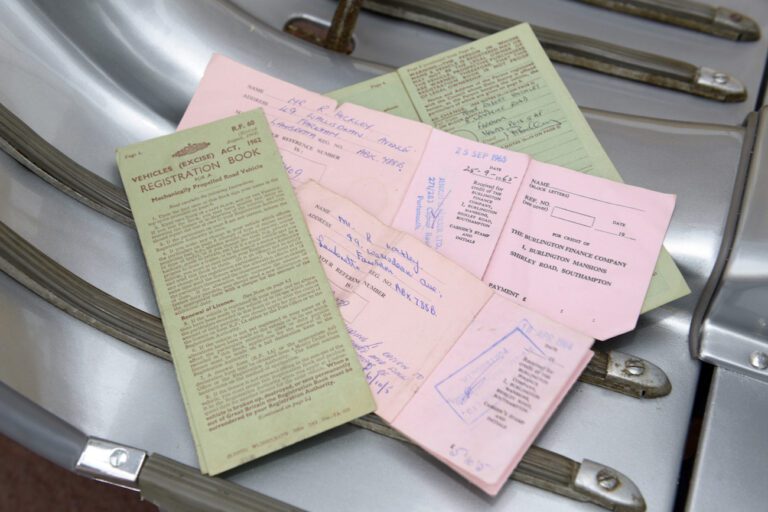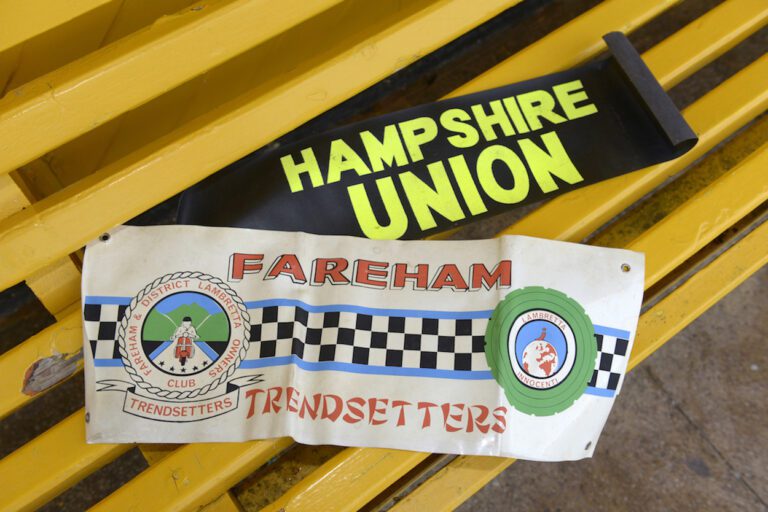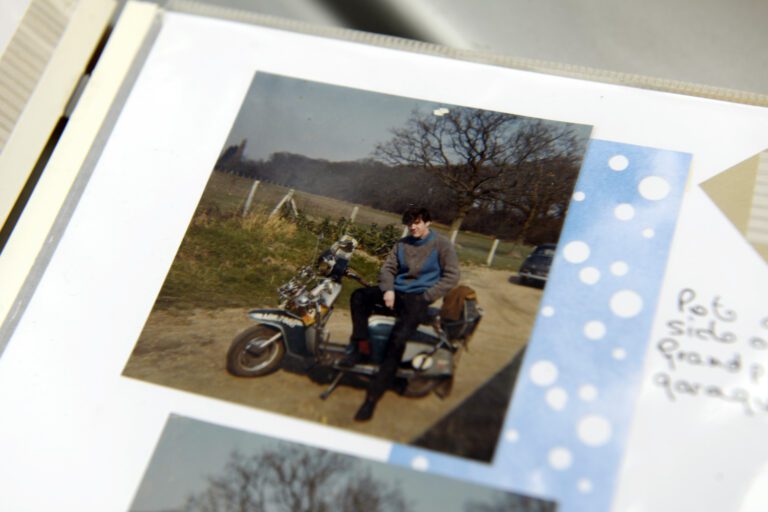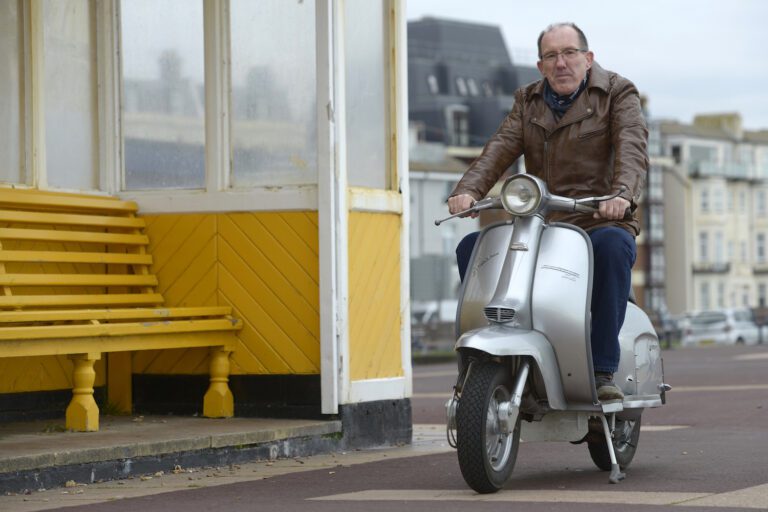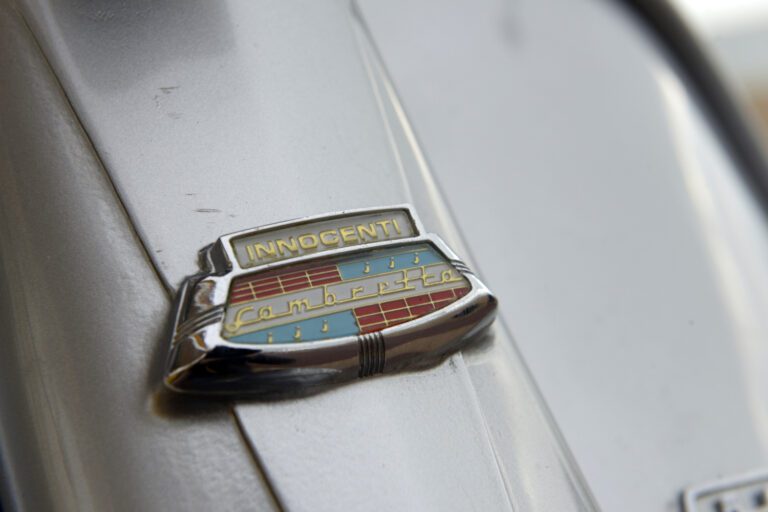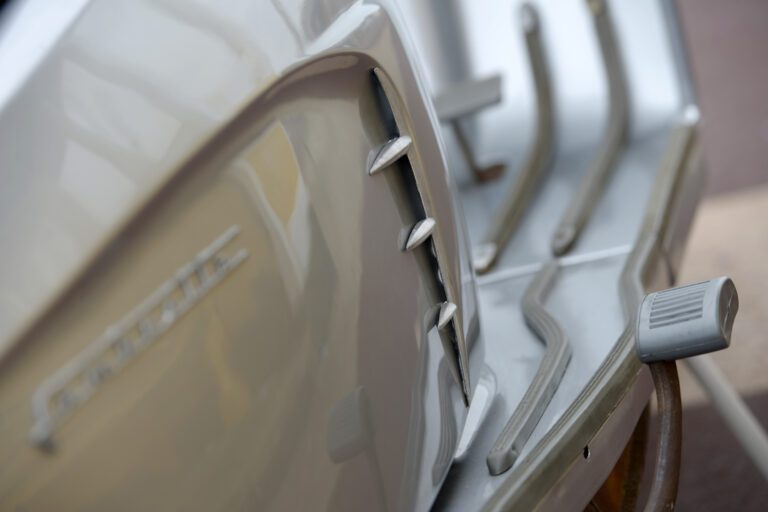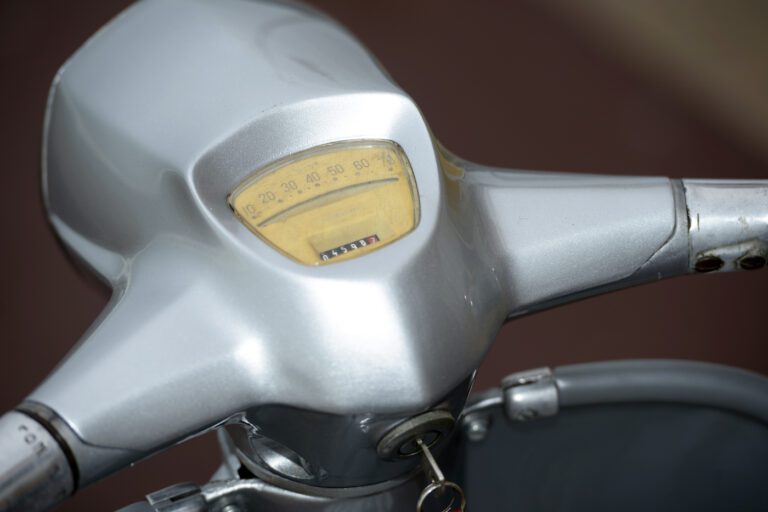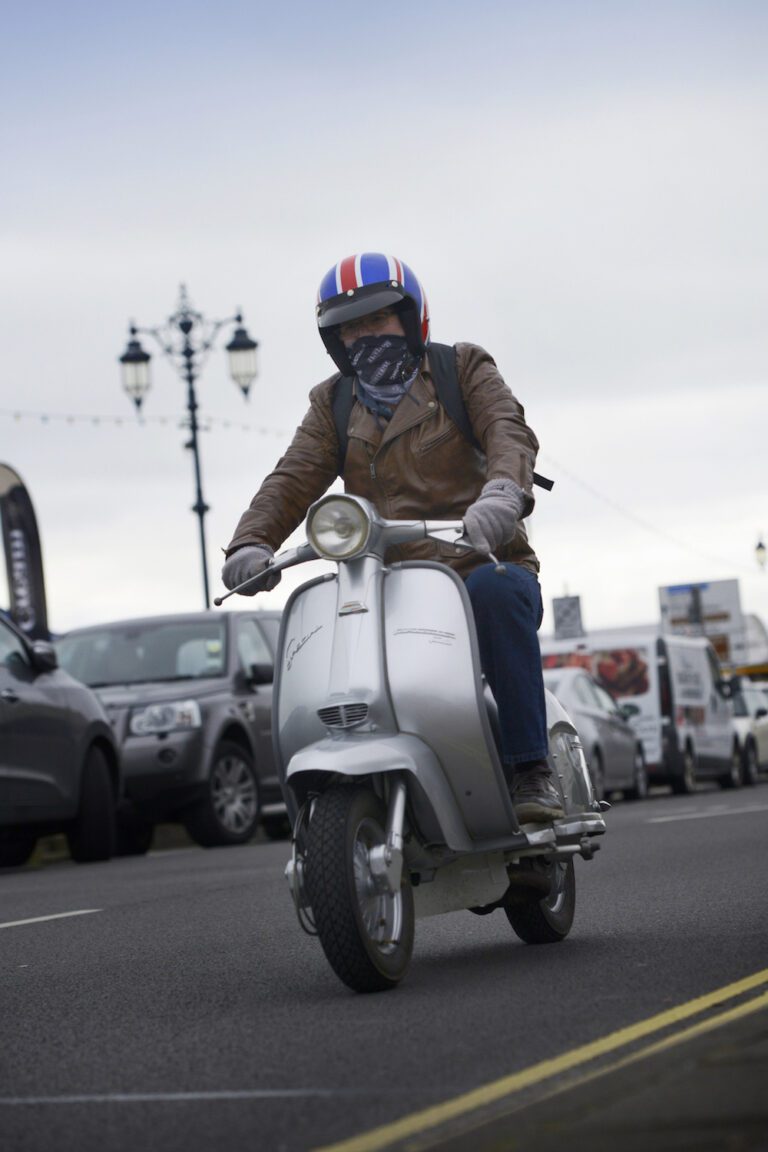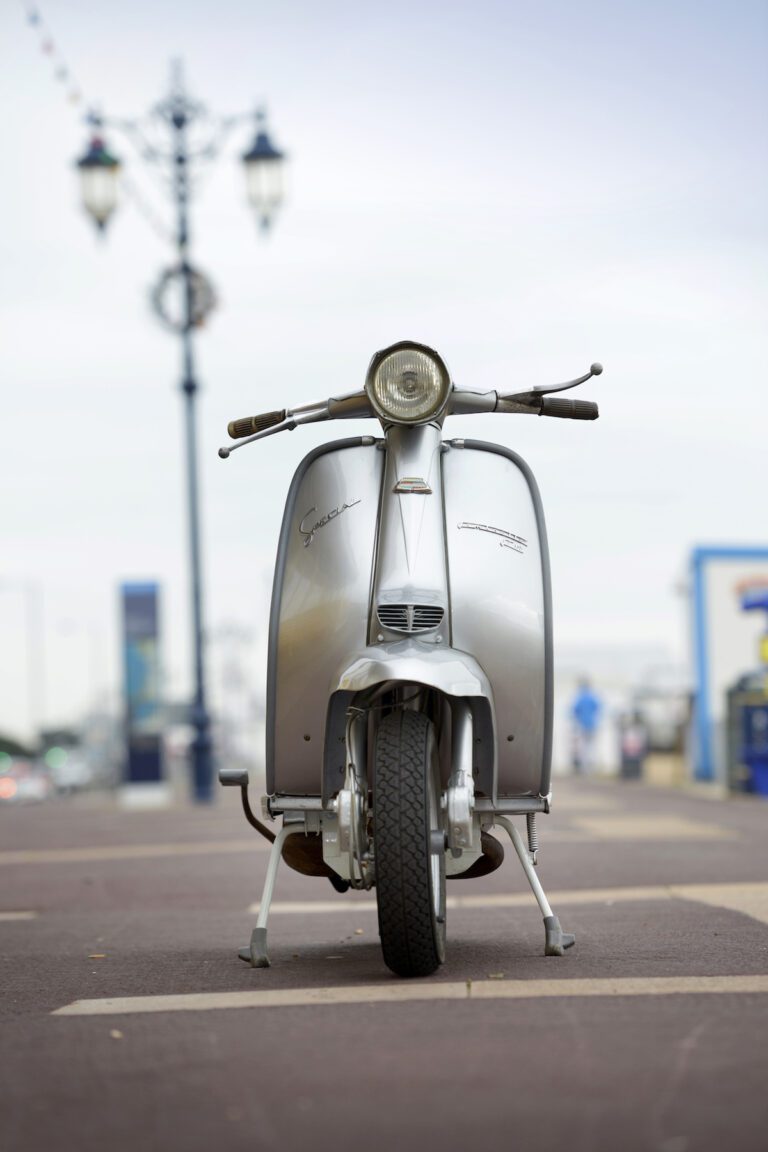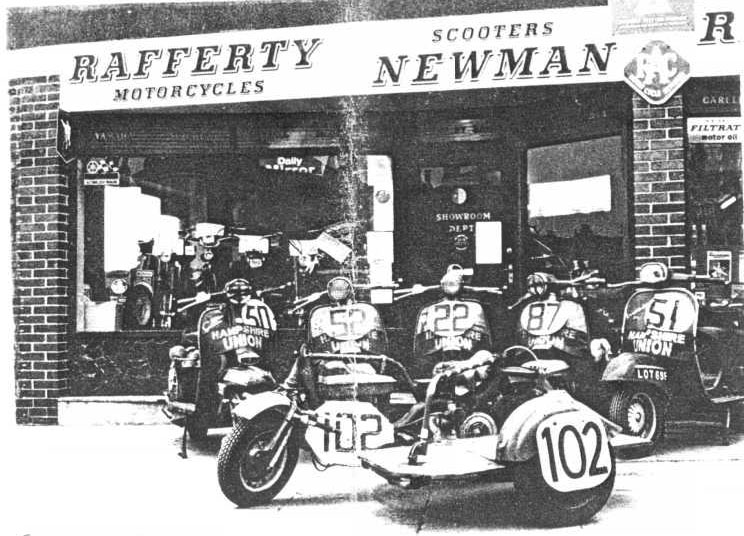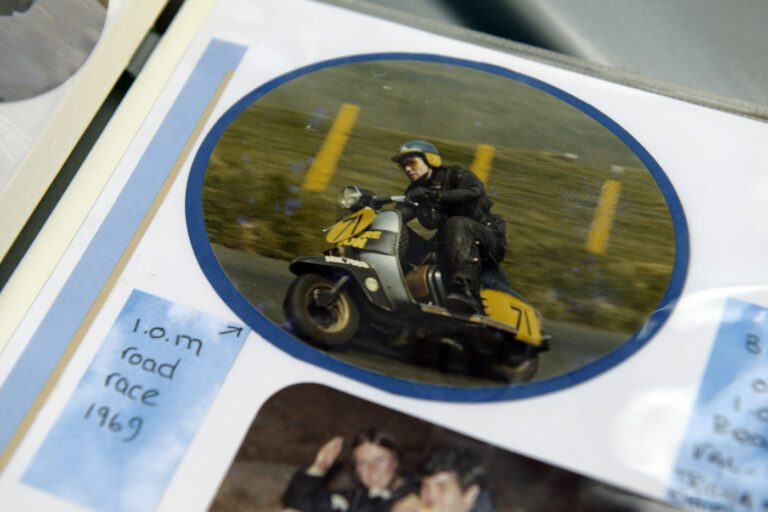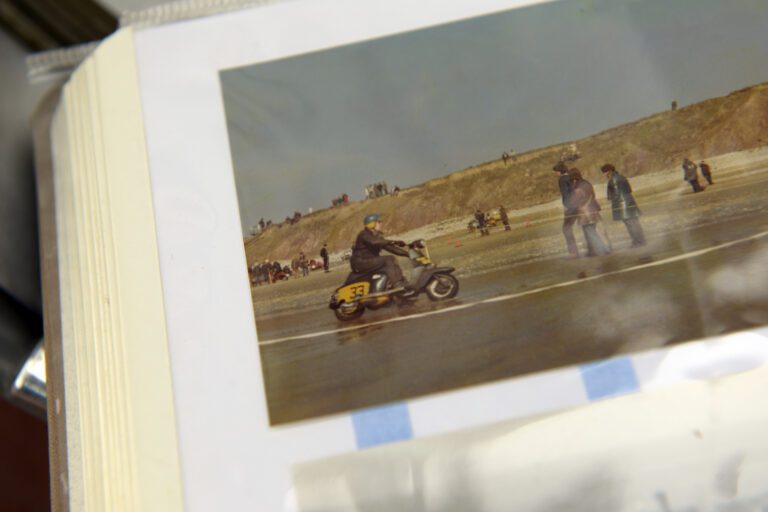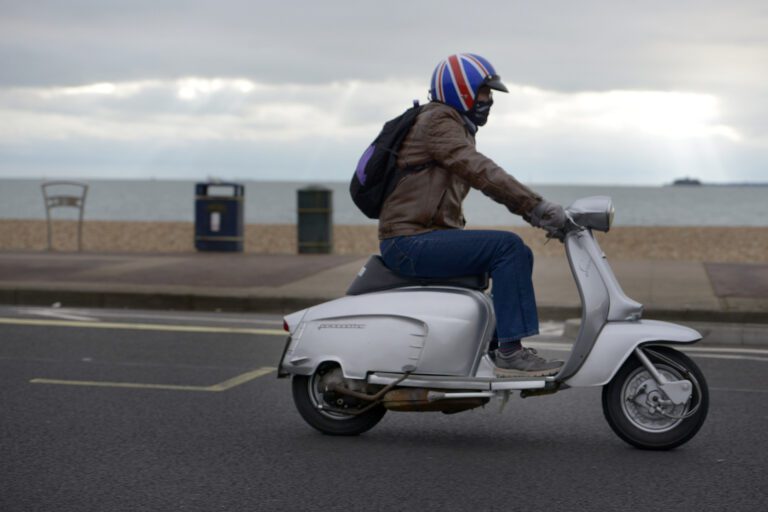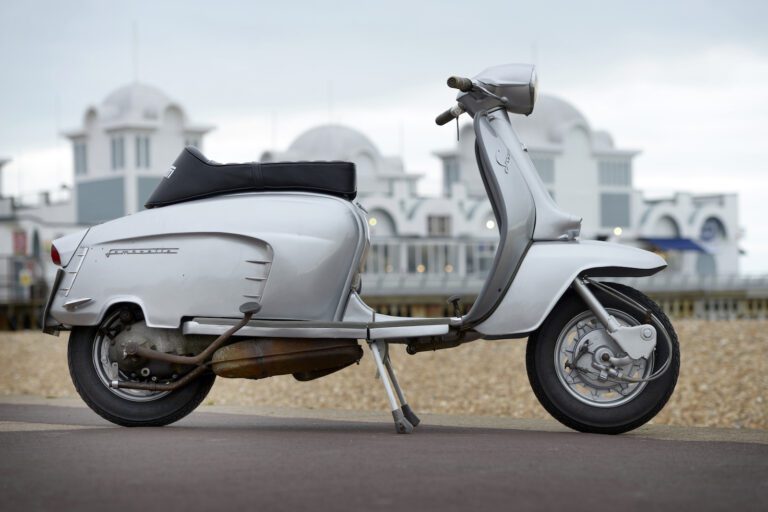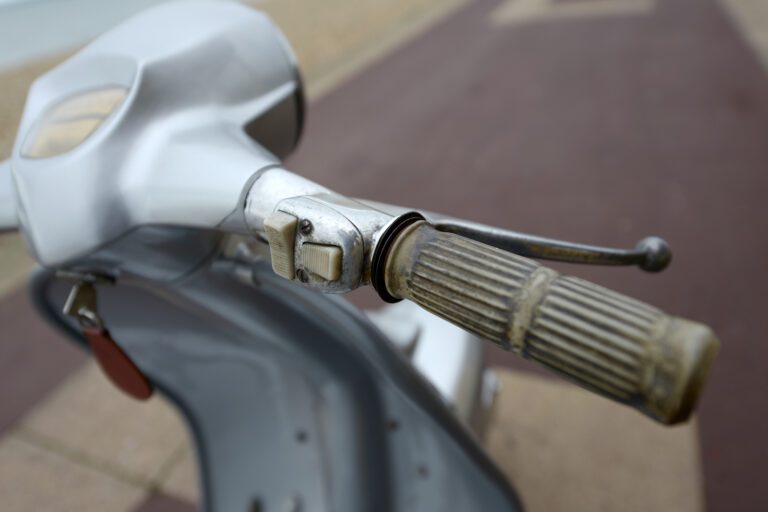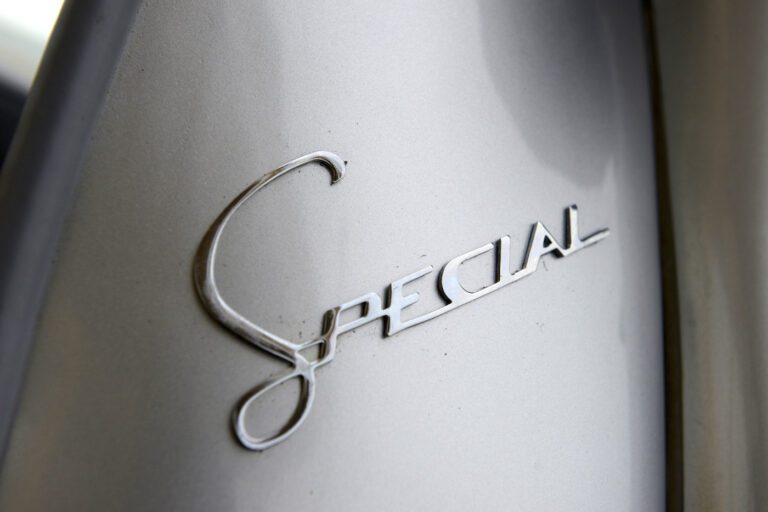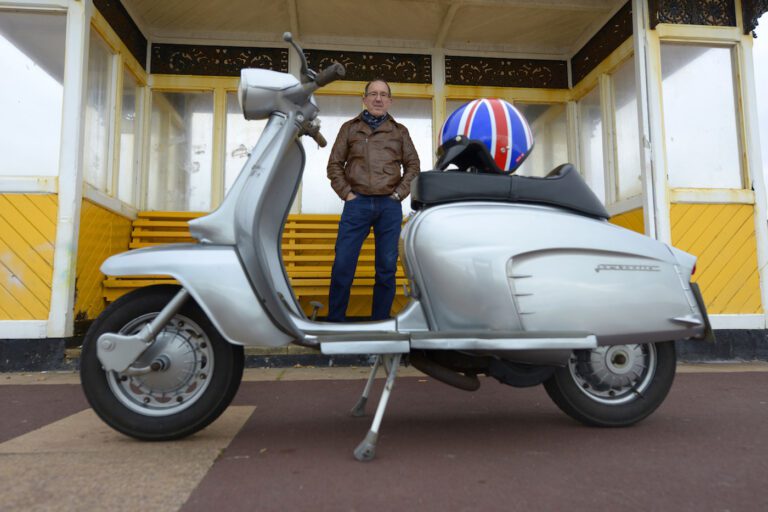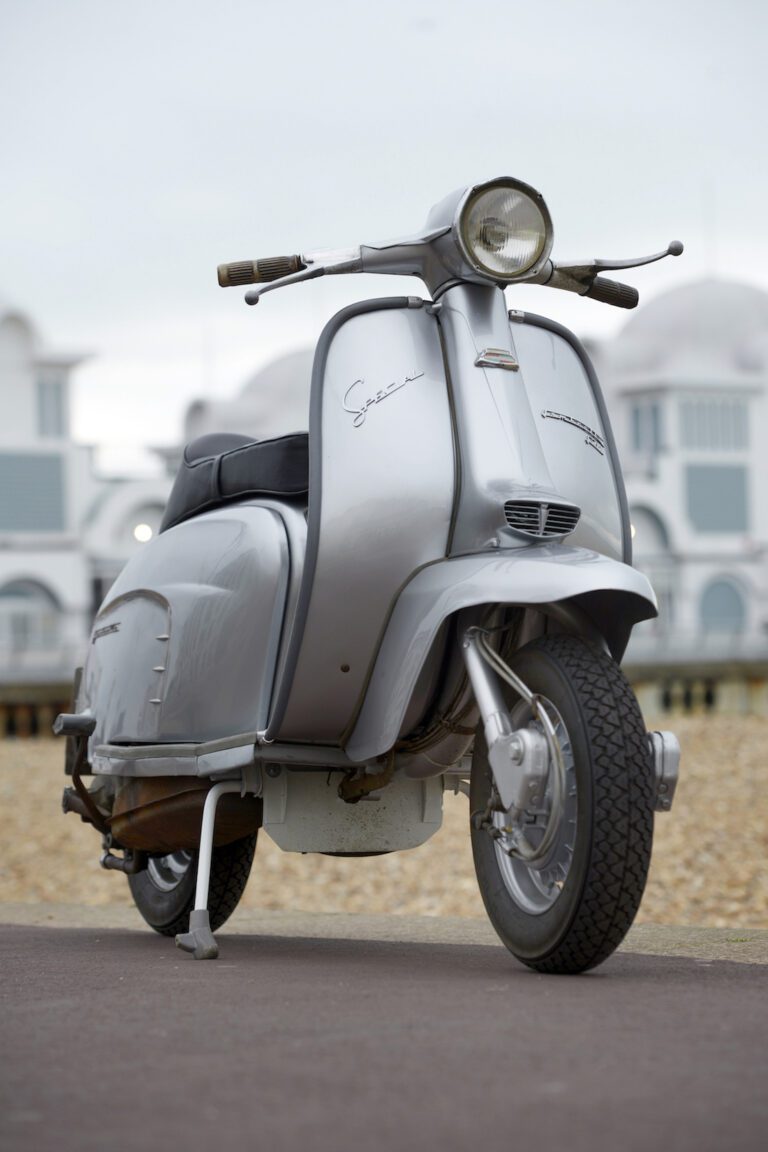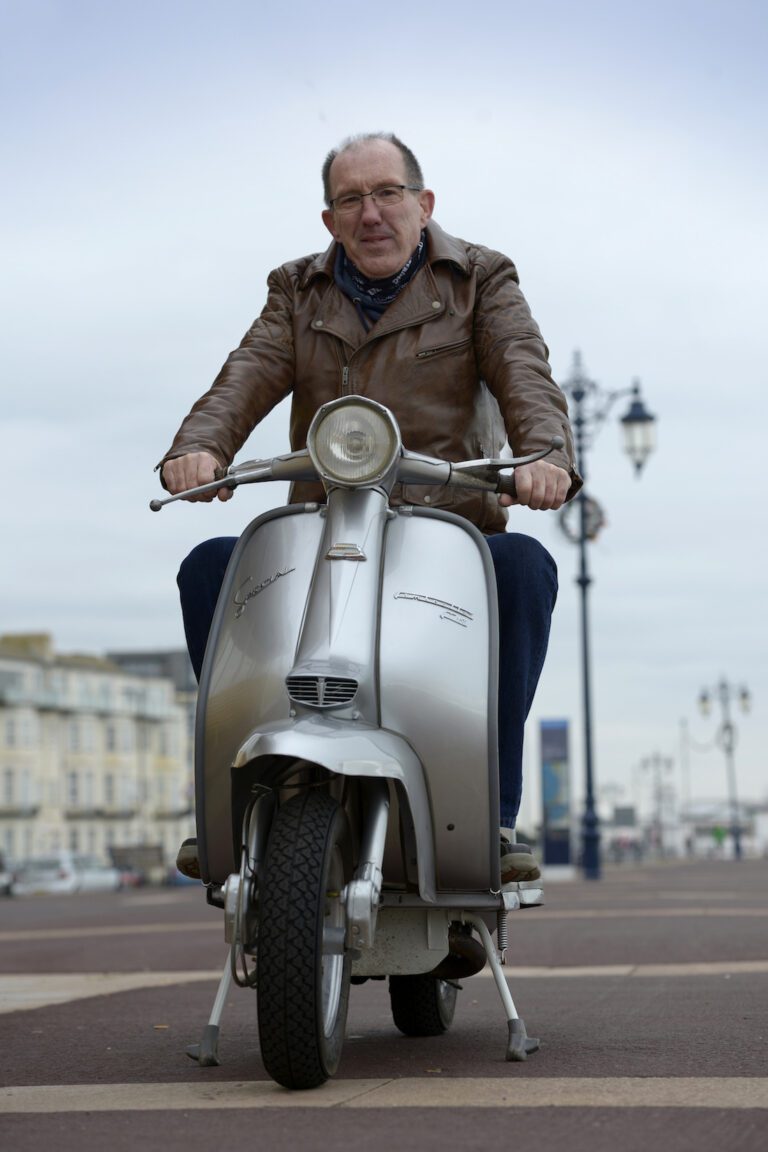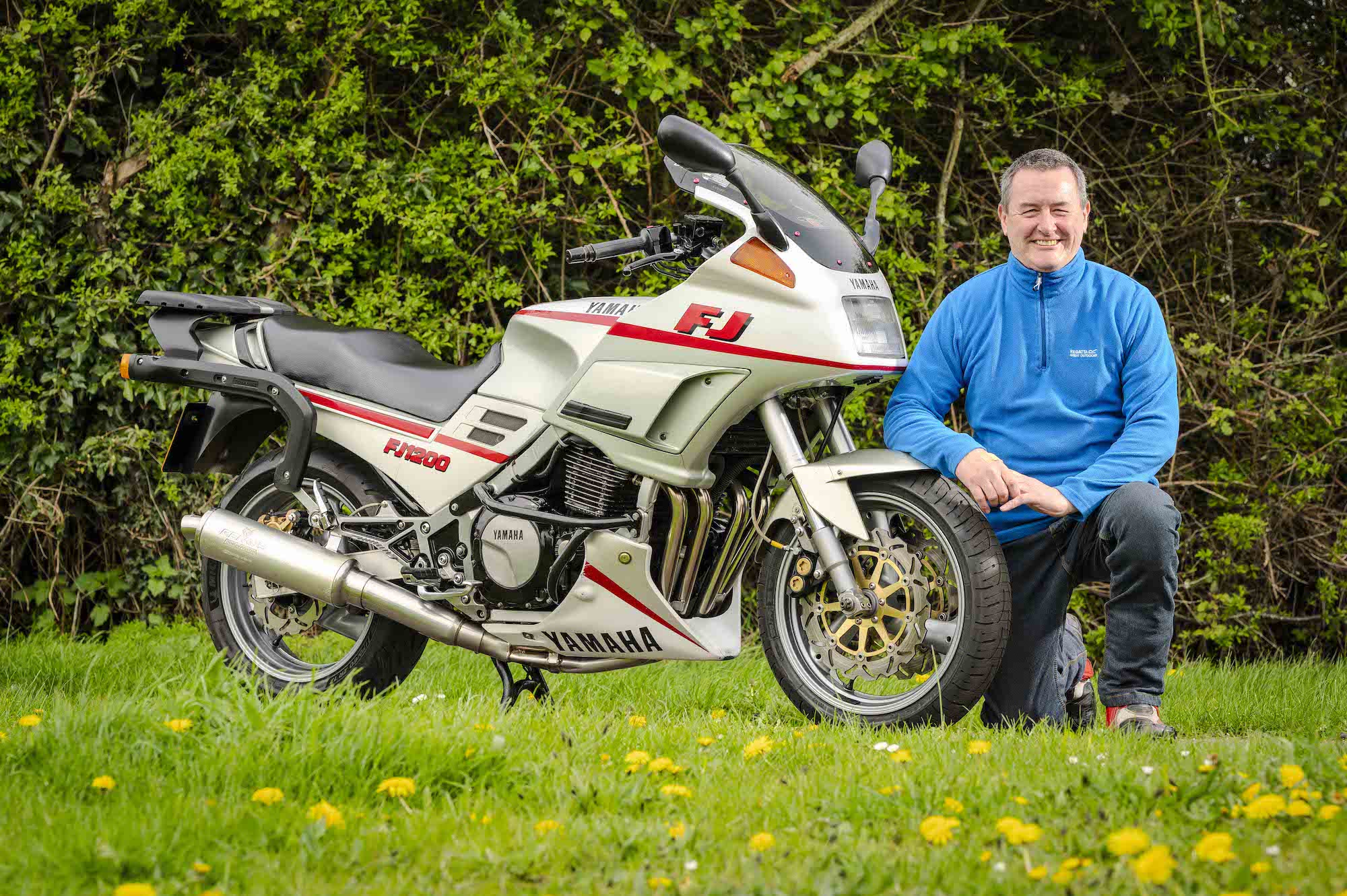April 1964. The Beatles were top of the charts with Can’t Buy Me Love, BBC Two hit our screens with Play School, and mods and rockers were months away from clashing at Brighton.
Down in Fareham on the south coast, a 16-year-old apprentice draftsman called Pete Hockley bought a Lambretta Li150 Special for precisely £177, 7s and 6d.
It was the start of a way of life; of scooter rallies, Parkas, foot-stomping music, coffee shops and, ultimately, a reputation as the most fearless of all racers on the legendary Wildcat Lambrettas.
“The finest guy on two wheels”
In his pomp, Pete was “the finest guy on two wheels ever in the scooter scene”, according to fellow racer Dave Tooley.
“I was always in awe of his riding prowess,” says Dave. “He was quite literally a genius. On a good day he was unbeatable almost regardless of what he was riding, scaring the living daylights out of anyone who watched him. To say he was quick is an understatement; you had to see it to believe it. He defied the laws of gravity.”
Pete was the national scooter track champion in 1969, racing both solo on his own Li150 and with a sidecar passenger in the Wildcat combinations, before hanging up his leathers in the early 70s and retiring his scooter from the road in the process.
Now, after a restoration spanning 40 years, Pete is back on the road on the silver Lambretta that carried him, sometimes with wife Val, all over the country from Blackpool to Brighton at the height of the mod era.
The Lambretta Li150 Special is Pete’s youth
“Selling it was not even a thought process,” he says, despite the soaring values of scooters over the past 10 years. “Other people said ‘why don’t you sell it because they get good money?’ Yeah, they do, but it’s my youth and I don’t want to throw it away.
“I remember some very good times with it and still enjoy riding it, so why sell it? It was not particularly in the way anyway, it was just there in the garage.”
Now 70, Pete had not ridden the Lambretta since his 20s and, despite being a keen cyclist, had to rebuild his feel for the machine on which he was once so revered.
“There was a learning curve again,” he says. “I live on a little circular estate and I was going round and round on that originally, just to get a feel for it.
“I got back onto the handling side of things and then slowly but surely went further and further away from home until I’d got the confidence and reliability back into it.
“Once you’ve been on two wheels it never leaves. It doesn’t matter how long you’ve been out of it, it’s still ingrained in your brain. I was like ‘yahoo, this is nearly as good as it used to be’.”
Flinging the Li150 Special around corners again
“Now I’m flinging it round corners again, but I’m not quite so wild and reckless as I was.
“Val used to ride on the back but she’s said there’s no way she’s getting on the back of that thing anymore! She’s chuffed I’ve got it back on the road though after all these years.”
It all started when Pete adopted his older sister’s NSU Prima scooter, but “it never really worked very well, so I ditched it very quickly”, buying his own brand new Lambretta.
“I liked the look of them and I was really just following in my sister’s footsteps, and it was the thing to do at the time,” he says.
The Li150 Special, originally only produced in all silver, featured styling from the TV series scooters with an uprated Li powerplant including a modified barrel and head, closer gear ratios and carburettor that allowed more fuel into the combustion chamber.
Pete quickly became a leading player in the south coast scooter scene, first with the Fareham Trendsetters and then with the Hampshire Union club that would later go down in folklore as one of the leading racing clubs in the country.
Sacked from his first job as a draftsman after designing a “vibrating feeder machine for grain” that went backwards instead of forwards when switched on, Pete had a short spell in the electrical industry before landing a job at legendary motorcycle dealer Rafferty Newman after a training as a Lambretta and motorcycle mechanic at Seals of Southsea.
Thousands of Parka-clad scooterists
It was at Rafferty Newman that he rose to the fore of the racing scene, but not before enjoying the heyday of Sixties two-wheeled youth culture, accompanying thousands of Parka-clad scooterists on rallies the length and breadth of the country.
“We went all over the place: Southend, Blackpool, Torquay, Brighton,” he remembers. “I look back on it as being exciting times. The Parka was the uniform, it did everything but keep you dry! Eventually mine was peeled off me and put in the bin. Scootering was a way of life, and there was a lot of community around it.”
His future wife, Val, was part of this social scene, and would later accompany Pete on the back of the Lambretta.
“She had a boyfriend who had a little motorbike, a Velocette, and we all used to go around together,” he says. “She was going to emigrate to Canada with him and his family, but at the last minute it all fell through because I turned up and she got lumbered with me for the rest of her life. Forty-six years later we are still together. She used to come along and join in. She didn’t ride as such, but she came as a pillion and contributed to the fun.
“We used to meet up, go out for rides, go to coffee bars and generally socialise. It did get us out all day. You never see anybody doing that these days; they’re all playing on their mobile phones and stuff. We were out and about, or annoying the neighbours with the noise.”
To some, the swarms of scooters descending on seaside towns spelled trouble, as footage of bank holiday beach fights between mods and rockers was broadcast on TV.
But Pete says scenes like those at Brighton immortalised in The Who’s cult film Quadrophenia were sporadic and overblown by the media.
Mods and rockers fights were “blown out of all proportion by the media”
“I wasn’t involved in any of that,” he says. “You were very aware of big wheels and little wheels. If you arrived on little wheels you were very aware of the big noisy things and the animosity between the two groups. But that was a minority rather than a majority, and blown out of all proportion by the media.
“We took part in the ACU 12-hour rally and there were motorcyclists and scooterists in it together. We were the best of friends, but you always had some kids in society that will promote aggravation.
“I never saw any real aggro. It was lads and girls being out, just being youngsters.”
As anyone who has ever gone on a scooter rally will know, whether in the 60s or as part of the mod revival of the 1980s right up until now, things don’t always go to plan.
For Pete, an abortive trip to Blackpool was the most memorable, for all the wrong reasons.
“We rode up there overnight and were picked up on the M6 by police,” says Pete. “It was blowing a hooley and I had a 10-foot long pennant on a pole on the back of the scooter.
“We were weaving our way up the motorway, the police pulled us over and said you can’t ride with that in this wind. I said we were going to Blackpool and this is only way to get there, so they let us go.”
On arriving in the seaside town, though, Pete and his mate couldn’t find the rally and decided to head back down south.
Falling asleep at the handlebars
“We got as far as Banbury and I fell asleep at the handlebars. My mate on the back slapped me on the crash helmet. He said ‘what are you doing?’ I said ‘what?’ He said ‘you’ve just gone across the road’. ‘No, I’m dropping you off at home.’ Then I realised we were nowhere near home. We were dead lucky.”
The pair parked up and draped their tent over a five-bar gate to get some sleep.
“We woke up alongside a bus stop with a double decker bus next to us,” he says. “Another time we went down to Torquay and it was so foggy some friends woke up in the morning and found they’d pitched their tent in the middle of a roundabout.”
As well as the scooters, the music and the sharp clothes, pills played a part in the mod culture of the 1960s, and Pete admits to having his youthful eyes opened wide at a disco in Portsmouth.
“I don’t drink or take drugs – I hate even taking paracetamol!” he laughs. “But I had my eyes opened. I went to a disco in a place down in Portsmouth with a mate.
“We were in there having a good time and suddenly the lights came up. It was a police raid and I’ve never seen a floor change colour so quickly all my life.
“Everyone around me was on pills and they emptied their pockets all over the floor. It was just a sea of pills. I stood there in complete amazement, thinking ‘what the hell is going on here?’ I couldn’t believe what I was seeing. The police could only nick you if they found the pills on you, so they just emptied their pockets.”
Pete got his kicks on the racetrack, and he was in the right place at the right time in the workshop at Rafferty Newman, run by former Isle of Man TT racer and master engine tuner Les Rafferty.
Having raced against Frank Sheene (Barry’s father) among others, Rafferty took his knowledge of race tuning and applied it to Lambrettas, creating the fabled Wildcat.
“When they introduced racing to the programme on the scooter rallies, we thought it could be a good idea to go racing,” says Pete, who competed at circuits including Lydden Hill, Mallory Park, Cadwell Park, and Thruxton, as well as sand racing on Sandown Beach on the Isle of Wight.
“I used to race on two wheels with my bike, and three wheels with a Lambretta combination. I was the first to use a low-slung kneeler sidecar.
“I’d lapped them all within three laps”
“At the first race at Mallory Park it was raining like hell and the carb got soaked in water and broke down. The others were all riding sit-up-and-beg combinations, and by the second race it had dried up. I’d lapped them all within three laps. At the next race meeting, another kneeler appeared, then another, and now they’re all that sort of shape.
“I was fortunate enough to ride some of Les’s Wildcats. There was some of his work in my engine as well, like a five port barrel.
“Three different guys did the work on the chair, two from work and my best man Tim. We used to call them chair monkeys. They were good times.”
According to Dave Tooley, Pete was the “most daring” of all on the circuit, and formed a formidable partnership with John Dudley, the pair obviously nicknamed “Pete and Dud”.
The Rafferty Newman workshops became a place of pilgrimage for entire scooter clubs, who would sometimes get a sneak preview of the Wildcat machines as they were fired up in the car park before being loaded into a van ready to go racing.
“Pete and John were particularly excellent at scaring the living daylights out of anyone viewing their antics in the car park,” says Dave.
“A large part of it was covered in a fine shingle, which was superb for providing colossal full throttle sideways power slides on their Wildcat sidecar outfit. They would tear up and down giving a spectacular display for the public to watch.
“I sometimes thought that Pete didn’t possess a sense of balance such as was bestowed on other human beings. He rode like he was on gimbals, getting away with almost impossible angles of lean and ridiculously high speed through corners.
“He was simply terrifying to watch”
“At places like Lydden Hill, he was simply terrifying to watch. Overcooking it on every bend, then grass tracking for another 100 yards as he wrestled with a bucking machine to regain the track, and never once falling off, as I remember.”
With a smile, Pete blames “marriage and fatherhood” for his decision to quit racing in the early 1970s.
“One had to settle down, so I was told!” he says. “I was not encouraged to carry on racing, and that’s when the scooter got put in the garage for a number of years until now.”
Two sons, and now five grandchildren, took up much of Pete’s time, and the Lambretta stood idle for the best part of 40 years.
“It was worked on over the years, and I was always thinking ‘it won’t take much to do it’,” he says. “When I didn’t have the time I had the money and when I didn’t have the money I had the time. It became a joke with people I know – I kept saying I’d get it back on the road and they were ‘oh yeah’, but when I eventually did it was a very different ‘oh yeah!’”
Pete has resprayed the Lambretta back to its original silver from its earlier blue flashes, and later bronze and gold, and returned the engine to standard tune.
“I’ve spent a whole lot more than I originally paid for it getting it back on the road,” he says, including new leg shields, mudguards, and engine work.
“There’ll be no more scooter rallies – I just go buzzing up the road on it now. It still accelerates quite quickly, but at 55mph it’s really starting to sing its heart out, at 50mph it’s more happy but it’s most comfortable at 45mph.”
After a 40-year hiatus, Pete says much has changed on Britain’s roads for motorcyclists, both with the roads themselves and other motorists.
“Bouncing all over the place”
“I have noticed a difference in the roads now,” he says. “In the 1960s there were not many bumps and ruts, but I’m bouncing all over the place now and I never used to.
“Maybe I’m just getting older and noticing them more. It’s also a more dodgy place to be. I’ve always been aware of the dangers, but there seem to be complete lunatics on the road now.
“It should be compulsory for anybody who wants to drive a car to ride two wheels beforehand. I’ve done a lot of cycling and there are motorists that don’t even think cyclists are there. At least with a scooter I can sit out in the middle of the road.”
Ever the adrenaline junky, Pete says that although his scooter racing days are behind him, he still gets his blood pumping in go-karts, while friends and family keep him active with experience birthday presents.
“For my 70th birthday, my son and wife combined to buy me a skydiving experience, and friends bought me a driving day in a Porsche 911 and Mini Cooper S – I think everybody’s trying to kill me off!” he jokes.
“On my 50th birthday I went bungee jumping, so I’m getting more extreme the older I get. I like to get the adrenaline pumping – that’s just me enjoying life, and the scootering is part of that.”
With both Pete and his very special Lambretta Li150 in the picture of health, a relationship between man and machine dating back to 1964 will go on for a good few years yet.
“I’m enjoying it and happy to be out there experiencing it again, and I’ll keep riding as long as I can,” he says.
After five decades, scootering remains a way of life for Pete.
If you enjoyed Pete’s story, you will also enjoy Chris’s story: 50 years of life with a Lambretta Li150.
